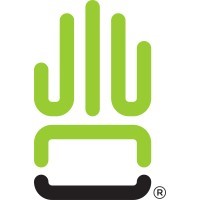What You'll Learn
28
Learning Modules
45
Exam Questions
30+
Hours of Instruction
7
Progress Quizzes
QSSP certificate & OSHA30 Card




What You'll Learn
#1 - Become a Trusted Safety Partner
This session introduces the foundation of QSSP, presents the QSSP Model, and how the QSSP course is strategically designed to broaden and deepen the applied OSH knowledge of the QSSP students. This process increases the overall competencies of the QSSP, enabling QSSPs to optimize end-user and customers partnerships. While not a “sales” course, QSSPs who leverage the applied OSH knowledge bring increased value to the customer end-user relationship leading to increased sales.
Session Objectives: At the end of this session participants will be able to:
- Describe how being a QSSP will enhance the level of trust with your customers/suppliers
- Explain why trust leads to increased credibility with customer to form a partnership
- Select key learnings for the business advantage
- Describe what QSSP is and is not
The Risk Analysis session introduces the QSSP student to key methods for the assessment of workplace risk. A QSSP immediate partnering application is reinforced, namely the OSHA requirement for workplaces to have “certified” PPE hazard assessments on file. Key Process Safety Management OSHA requirements are presented, relating them to Risk Assessment.
Session Objectives: At the end of this session participants will be able to:
- Explain risk analysis
- List risk assessment techniques
- Identify the Hierarchy of Control
- Explain the purpose of the Process Safety Management Standard
- Describe the “What-If” Hazard Analysis format
Safety & Health Management is designed to acquaint or re-acquaint the QSSP with contemporary approaches to the business’s management of safety & health. The professional practices of safety and health are addressed and, the safety and health “profession” is examined.
Session Objectives: At the end of this session participants will be able to:
- List the typical responsibilities of Risk Management Resources
- Name the two primary “board safety” certifications for Occupational Safety and Health
- List the four underlying principles / values in professional codes of conduct
- Describe reactive and proactive H&S management systems
- Recognize if your customer is after-the-fact or before-the-fact focused
This session establishes the frame work of how to make a case for safety & health as a business building asset, not a cost-based necessity. The session is designed to help QSSP’s understand several measures that can be used to show the business value of well managed occupational safety and health systems.
Session Objectives: At the end of this session participants will be able to:
- Describe how to leverage health & safety management as a business building asset & part of sustainable business practices
- Compute & explain commonly used injury/illness rates
- Interpret workers compensation expenditures
#2 - Master the Regulatory Landscape
Intro to OSHA provides QSSP students foundational invaluable insights and information about the US’s primary safety & health regulatory authority. OSHA’s organization, mission, and operating model are presented with discussion examples designed to help QSSP’s recognize end-user compliance obligations. Workplace incident & injuries are defined along with applicable employer reporting & record keeping requirements are presented. A follow-on session introduces QSSP students to foundational indicators of workplace incident frequency and severity. (Injury/Illness rates TCR & DART) Practical exercises are included.
Session Objectives: At the conclusion of this session participants will be able to:
- Identify how OSHA carries out its mission
- Explain basic employer responsibilities & worker/employee rights under OSHA
- Summarize the OSHA inspection process
- Calculate TCR / DART Rates
- Locate key OSHA requirements in 29 CFR 1910
- Describe OSHA “Horizontal” & “Vertical” Standards
This session is designed to overview many categories of personal protective equipment while presenting and discussing applicable standards and OSHA regulations. Selection, Use, functionality and limitations are offered as interactive discussions. This session also includes a session on Chemical protective PPE, selection, use and limitations.
Session Objectives: At the end of these sessions’ participants will be able to:
- Identify the types, limitations & capabilities of, and applicable standards for PPE
- Identify PPE opportunities of the OSHA 1910.20 Regulation (Haz-Waste Operations & Emergency Response) HAZWOPER
- Apply selection criterion to the safety solution
This session includes several “safety Hazard” topics commonly encountered by QSSPs in the industrial workplace, including Haz-Energy control, (LOTO) Welding, Cutting, Fire Prevention, and Machine safe guarding. Hazards, exposures controls and OSHA requirements are presented with application examples.
Session Objectives: At the end of these sessions’ participants will be able to:
- Apply OSHA’s 1910.147 Lock Out Tag Out (LOTO) standard to end-user applications
- Recognize physical and health hazards associated with welding
- Identify components of a Designated Welding Area & control methods for minimizing welding hazards
- Explain the purpose of machine guarding
- Recognize the basic types of hazardous mechanical Motions Actions
- List the OSHA requirements for guards and describe accepted OSHA guarding techniques
The Hazard Communication session provides the QSSP student with background on this very frequently violated OSHA regulation. The key insights and perspectives provided during this session are designed to support end-user partnering discussions.
Session Objectives: At the completion of this session participants will be able to:
- Identify employer’s responsibilities under the HCS, including training requirements
- Identify components of a Hazard Communication program
Describe requirements of the different types of Hazard Communication labels - Locate pertinent information about chemicals on labels, including other forms of hazard communication, to ensure the “employees right to understanding” provisions of GHS requirements
This session provides the QSSP student with an Overview of construction safety and construction safety regulations. Comparisons and contrasts are made with General Industry safety and health hazards and exposures. The premise of multi-Employer worksites is introduced and explained with examples.
Session Objectives: At the end of this session’s participants will be able to:
- Explain which OSHA standards apply to Construction activity
- Describe how construction sites differ from general industry
- Identify types of hazards that exist,
List examples of employers at multi-employer worksites
This session provides a contemporary review of Ergonomics; specifically focusing on the risk factors associated with Musculo Skeletal Disorders (MSDs). Applicable Risk assessment principles are discussed along with Risk Reduction approaches.
Session Objectives: At the end of this session participants will be able to:
- Discuss the relationship of ergonomics to the prevention of Musculo-skeletal disorders (MSDs)
- List the major risk factors for MSDs and understand their significance
- Be familiar with control and prevention methods and devices
#3 - Assess & Prioritize Risk Areas
This session provides a foundational concept of Industrial Hygiene, and more significantly its relationship to end-user occupational “health” hazards recognition, evaluation and control. Including PPE. The session provides QSSP candidates with key insights on end-user applications while connecting health hazards to safety sales solutions.
Objectives: At the end of this session participants will be able to:
- Define the basic purpose and applied practice of industrial hygiene
- Name the fundamental classifications of airborne chemical hazards and the primary environmental stress factors classes addressed by Industrial Hygiene
- Relate basic toxicology terms to occupational health hazard risk,
Repeat and explain the difference between the principal routes of entry for chemical exposure - Summarize the approaches to measuring and quantifying airborne contaminants, including personal- breathing zone sampling
This session culminates the Industrial Hygiene presentations Recognition-Evaluation-Control, by reinforcing the Hazard Control Hierarchy and identifying contemporary approaches to the reduction of airborne contaminant exposures and subsequent risk.
Session Objectives: At the end of this session participants will be able to:
- Name the approaches to health hazard control and provide examples for each
- Explain the health hazard control hierarchy in order of preferred
- Discuss application examples of health hazard control categories
This session is designed to overview key end-user (employer) requirements of the OSHA General Industry and Construction Confined Space Entry Regulations while concurrently identifying safety solution opportunities for QSSPs.
Session Objectives: At the end of the Session Participants will be able to:
- Explain the difference between Confined Spaces & Permit Required Confined Spaces
- Describe confined space hazards, and the methods used to identify and control them
- Specifically Identify the types of atmospheric hazards and their hazard thresholds
- Name key OSHA regulatory requirements for Permit Required Confined Space Entry
The Fall Protection session is designed to provide “benchmark” principles of Fall Protection for the QSSP student. Relevant standards, regulations and applications are reviewed and a fall dynamics demonstration is included.
Session Objectives: At the conclusion of this session participants will be able to:
- Explain fall prevention, protection, positioning, & arrest
- Know and Understand the Components of a fall arrest system
This session provides the QSSP student with the background and contemporary application of occupational exposure limits of airborne chemical hazards. The session addresses how these limits establish the basis from which respiratory protection selection decisions are made.
Objectives: At the end of this session participants will be able to:
- Communicate the application of Occupational Chemical Exposure Limits
- Describe the similarities and differences between OSHA PELs and ACGIH’s TLVs
- Interpret the definition of Time Weighted average, and related time based, exposure concentrations including Short Term Exposure Limits (STEL) and Ceiling Limits
- Determine time weighted average concentrations from provided data, and apply the TWA results to risk control decisions, including respiratory protection
- Recognize and locate OSHA expanded health regulations and their PELs
The Flammable Liquids session is designed to provide the QSSP student with an overview of the hazards associated with Flammable liquids. Current regulatory definitions and requirements are presented from an end-user’s perspective, including handling, storing, and transferring. Examples and insights are provided to support QSSP’s solution-based customer discussions.
Session Objectives: At the end of this session participants will be able to:
- Explain the term flash point
- List the four categories for flammable liquids
- Identify the key flammable liquid storage requirements
- Explain grounding and bonding
- Explain an incipient fire & list the types of portable fire extinguishers
This session has been designed to reinforce the significance of planning and preparing for workplace injuries to catastrophic crises events. OSHA’s requirements are presented with practical application examples and exercises throughout the session.
Session Objectives:
- Describe a workplace emergency plan and list basic requirements
- List special equipment that may be needed & identify other Emergency situations that could impact the workplace
- State the scope of the Bloodborne Pathogen Standard (BBP)
- Give examples of the types of BBPs and their epidemiology
- Describe key bloodborne pathogen requirements for the workplace & Identify compliance methods for bloodborne pathogens
The Respiratory Protection session provides a comprehensive overview of respiratory protection types, categories, limitations, and applications. Applicable OSHA regulations and NOISH certification are reviewed and related to end-user challenges and applications. Program “Partnering Opportunities” for QSSPs and end-users are identified throughout the session.
Session Objectives: At the end of this session participants will be able to:
- Explain the purpose and function of respiratory protective devices,
Correlate the relationship of workplace exposure data to the selection of respiratory protection - Identify the types of respiratory protective devices and match them to respiratory hazard classes
- Demonstrate the ability to solve respiratory selection problems
- Name key OSHA regulatory requirements for respiratory protection
This session recognizes Noise as an occupational health hazard and example of an environmental stressor. It is designed to support QSSPs partnering discussions with end-users about contemporary misunderstanding of regulatory requirements designed to protect employees against this hazard. Strategic insights and application examples are provided throughout the presentation.
Session Objectives: At the end of this session participants will be able to:
- Identify Noise as an example of a Physical energy, environmental hazard
- Explain and apply Noise measurement terms and criterion
- Solve hearing protective device selection problems using NRR factors
- Recognize key OSHA regulatory requirements for Noise and Hearing Conservation
This session highlights the Hazards, and Risk control requirements of one of OSHA’s newer regulations. Emphasis is given on QSSP provided “solutions” to end-user hazards, exposures and risk reduction approaches.
Session Objectives: At the end of this session participants will be able to:
- List ways QSSP’s can support end-users with Walking and Working Surfaces compliance
- Identify PPE, products or signage that will assist with compliance
- Explain the usage requirements for portable ladders
- List the requirements for dock boards and rope descent systems
This session is designed to acquaint or refresh the QSSP’s knowledge on the hazards of electricity while also presenting electrical risk reduction devices, equipment, and methods. Applicable Personal Protective Equipment is also discussed.
Session Objectives: At the end of this session participants will be able to:
- Explain the hazards & risks of electricity
- Describe electrical safety devices (e.g., GFCI, circuit breakers, fuses, etc.)
- Identify appropriate personal protective equipment by PPE Electrically Rated Category
Need to Know
- When
September 11 – 14: 8am – 4:30 Eastern each day
- Where
Virtual Live
- Contact
Sharon Tolson
Manager, Learning & Information Resources @ ISEA
- Event Policies
All registrants agree to our event policies.
Registration Options
Single Registration
Members save 30%-
All course materials
-
OSHA30 Card
Silver Registration
Group of 5 attendees-
All course materials
-
OSHA30 Card
Gold Package
Group of 10 attendees-
All course materials
-
OSHA30 Card
Sponsorship Options
Are you interested in reaching decision makers at leading companies and their executives in the safety equipment industry? We have a limited number of sponsorship opportunities for our:
- Nov. 14 Awards Dinner
- Nov. 15 Keynote Speaker
- Safety Partner Sponsorship

Faculty & Instructors

Bobbi Samples

Bill Simkins
Course Details
This course is ideally suited for participants with 1-7 years of safety industry experience. Attendees must be present for all scheduled days and times, complete all course work, and successfully pass the competency exam to earn the QSSP designation. Exam retakes cost $250 per student. This course will include an OSHA30 card. QSSP in-person also includes continental breakfast and lunch at the hosting hotel.
QSSP Designation Requirements: Students must complete all course hours, course work, and score a 70% or higher on the competency test. Certificates will be awarded to participants who have two or more years of safety sales or marketing experience and who successfully attend and pass the QSSP Program.
Those who have less than 2 years of experience still benefit from attending and passing the QSSP program because they can utilize their increased knowledge to better communicate with customers in a consultative manner on a variety of safety topics. The QSSP designation will be awarded after 2 years of experience as approved by ISEA. The QSSP designation represents a safety sales professional who has foundational safety knowledge combined with industry experience.
Agenda
Lorem ipsum dolor sit amet, consectetur adipiscing elit. Ut elit tellus, luctus nec ullamcorper mattis, pulvinar dapibus leo.
Tuesday, November 18
9AM – 11AM
Lorem ipsum dolor sit amet, consectetur adipiscing elit. Ut elit tellus, luctus nec ullamcorper mattis, pulvinar dapibus leo.
Wednesday, November 19
2PM – 3:30PM
Lorem ipsum dolor sit amet, consectetur adipiscing elit. Ut elit tellus, luctus nec ullamcorper mattis, pulvinar dapibus leo.
Adipiscing elit. Ut elit tellus, luctus nec ullamcorper mattis, pulvinar dapibus leo.adipiscing elit. Ut elit tellus, luctus nec ullamcorper mattis, pulvinar dapibus leo.
Thursdayy, November 20
2PM – 3:30PM
Lorem ipsum dolor sit amet, consectetur adipiscing elit. Ut elit tellus, luctus nec ullamcorper mattis, pulvinar dapibus leo.Ut elit tellus, luctus nec ullamcorper mattis, pulvinar dapibus leo.Ut elit tellus, luctus nec ullamcorper mattis, pulvinar dapibus leo.

